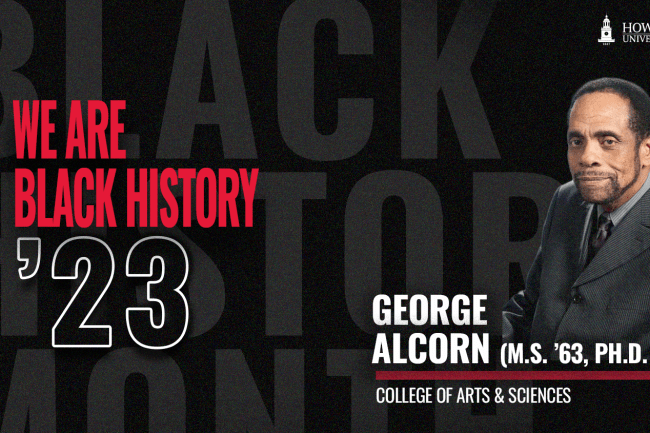In 1969, America had done the unthinkable: Mankind reached outer space, a feat that changed the landscape of science forever. This posed a new question to many aspiring scientists: How do we top a historical moment of mankind?
The impossible breeds innovation, and physicist and Howard University alum George Alcorn (M.S. ’63, PhD ’67) was up for the challenge. Throughout his four-decades long career, Alcorn solidified over 30 patents, eight of them public, which has changed the world of physics by light years. These included x-ray spectrometer and the airborne topographic mapping system.
He served as the lead physicist and engineer on a four-person team. NASA filed an invention patent on February 19, 1982 for the x-ray spectrometer, considered Alcorn’s most notable invention. An x-ray spectrometer is designed to use a focused beam of charged atom particles to identify and lift samples, allowing scientists to examine the atoms lifted by the beam. The spectrometer identifies characteristics of the materials that are being studied, thus easing the process of understanding certain atomic structures, physical matter and other identifying elements.
Alcorn completed the original x-ray spectrometer while incorporating aluminum properties in thermomigration, a process of heating or cooling certain atoms for them to separate. Alcorn received a patent for this particular inventions, and another for creating another method of the x-ray spectrometer through laser drilling. The Alcorn-led patent was accepted on September 18, 1984. He was later named the NASA/GSFC Inventor of the Year.
As the science world recognized Alcorn for his achievement, he played an integral part in other inventions. From far distances, the Airborne LIDAR Topographic Mapping System (ALTMS) emits light toward the Earth’s ground surfaces, collecting data that is hard to examine for on-the-ground scientist. The mapping system has been adopted by thousands of businesses that use drones to capture data and insight. For this invention, Alcorn received an award from the Government Executive Magazine in 1999 for his role as a developer and manager on the invention.
Many of Alcorn’s inventions are associated with innovating models that contain semiconductors, a method that measures how well heat or electrical charge can pass through certain materials.
Alcorn’s love for science begins with his Indianapolis roots. His father owned an auto mechanic business. In a feature story written by NASA, Alcorn rehashed fond memories of him, and his young brother Charles being inspired by their father.
“I was impressed with his brilliance. He taught me that all obstacles in life could be overcome by hard work and determination. I applied this philosophy throughout my career,” Alcorn said.
He pursued that childhood passion and completed a degree in physics from Occidental College in Los Angeles in 1962. Alcorn pursued his master’s in science in nuclear physics and doctorate in atomic and molecular physics at Howard, completing his thesis in 1968.
After graduating from the University, Alcorn began his career in developing scientific technology in private industries, starting a career as a physicist for IBM. He continued his career at NASA in 1978, where he developed technologies for space stations and other private institutions throughout the country.





